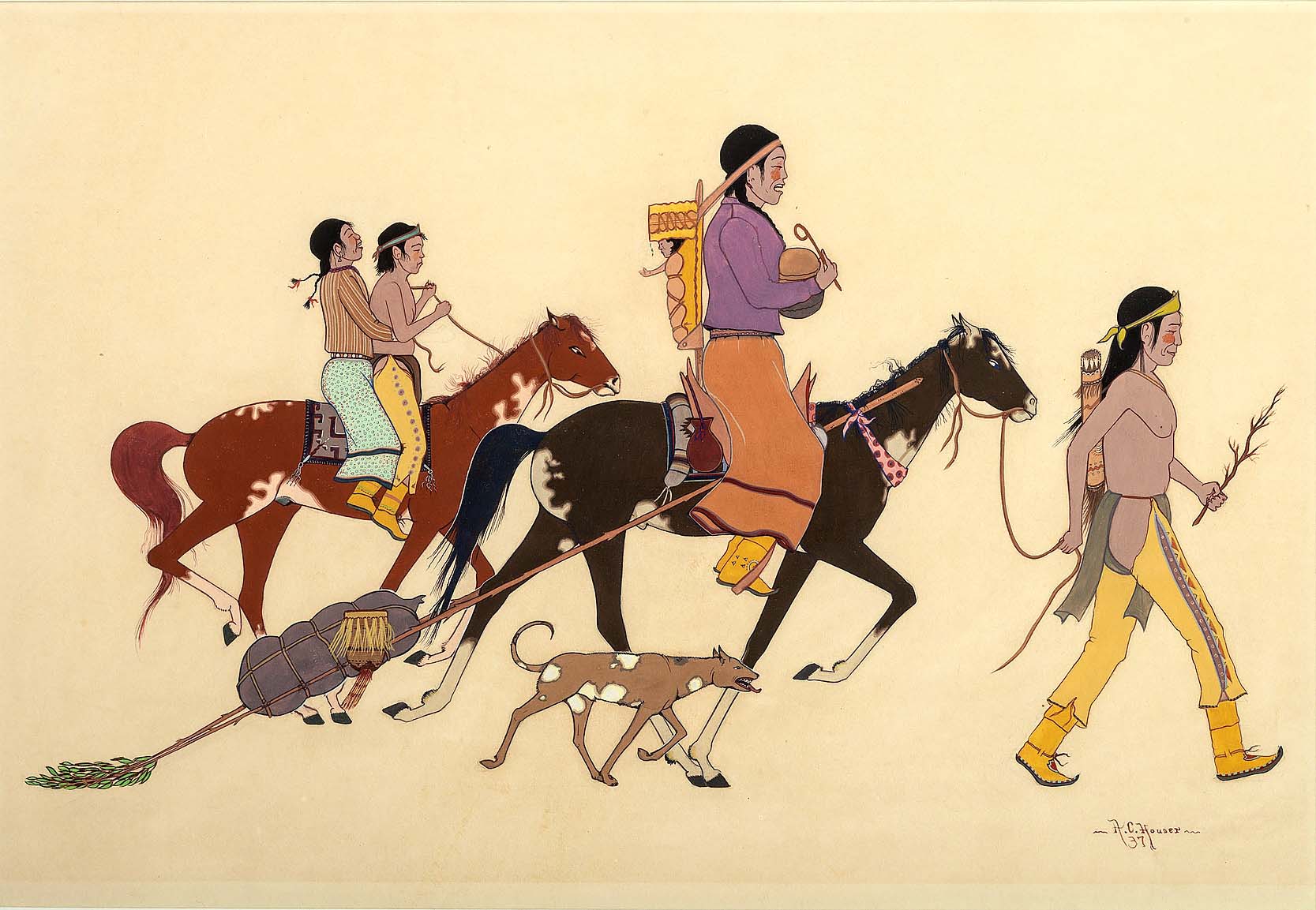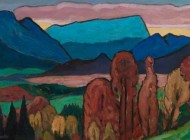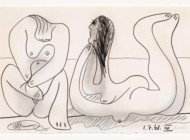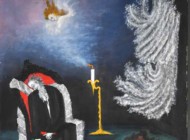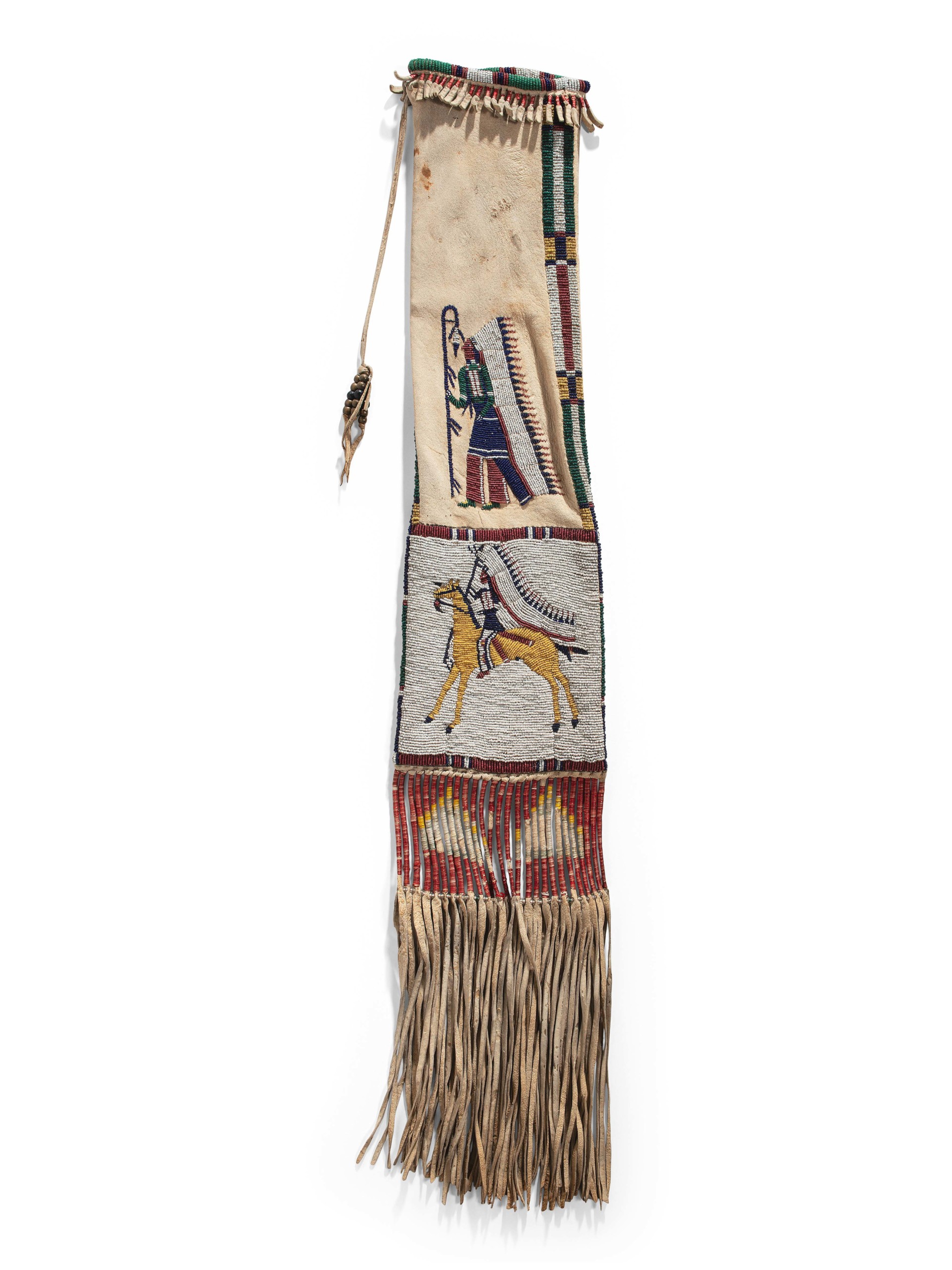
Achieving the sale’s highest price of $70,350 was this Cheyenne River or Pine Ridge Sioux beaded hide tobacco bag from the fourth quarter of the Nineteenth Century, 35 by 6½ inches ($20/25,000).
Review by Carly Timpson
CINCINNATI — Freeman’s | Hindman’s fall auction of Native American art spanned centuries and celebrated the rich artistic traditions of North America, offering 267 lots, including those from the Emily T. and Adolphus Andrews collection (Porcupine Point, Lake Tahoe, Calif.), the Ronny and Doris Smithee collection (Oklahoma City), Colin McCullough, Gary L. Fogle, an esteemed Midwestern collection and Richard Rogel (Colorado and Michigan). The September 25 auction realized a total of $1,428,766, seeing 93 percent of lots sold and achieving 113 percent by value.
Danica Farnand, vice president and head of department of Native American art, stated, “Putting this auction together really was a labor of love. It was such a treat to handle so many rare and early pieces all in one place, and even better to share them with others who appreciate them. There’s nothing more rewarding than seeing a sale come together beautifully and knowing it’s welcomed by the collecting community.”
Crafted by a Cheyenne River or Pine Ridge Sioux maker during the fourth quarter of the Nineteenth Century, a thread and sinew-sewn, beaded hide tobacco bag with pictorial details was bid to the sale’s highest price. Farnand said, “This Cheyenne River or Pine Ridge Sioux beaded tobacco bag is a special bag. The front is decorated with two horse-and-rider figures and two men holding a society staff and lance. The beads used on the bag are faceted beads, giving the figures a sparkle when they hit the light.” Consigned from the Andrews collection, the bag measured 35 inches long by 6½ inches wide and exceeded its $20/25,000 estimate to achieve $70,350. Farnand added, “We were honored to offer it as part of the Emily T. and Adolphus Andrews Collection of California, a remarkable collection that included rare early pieces from the Northeast, Plains and Plateau beadwork and Pomo baskets. This tobacco bag was among the standouts, and it ultimately sold to a phone bidder.”

This Apsáalooke beaded hide shirt, late Nineteenth Century, thread and sinew-sewn, softly tanned antelope with ermine tube drops, 36 by 60 inches (with arms outstretched), brought $38,400 and led the offerings from the Rogel collection ($15/25,000).
The Andrews collection “drew significant attention for its breadth and quality, with rare early pieces from the Northeast, colorful Plains and Plateau bead and quillwork, distinctive California and Pomo baskets and more,” according to Courtney Chapel, associate vice president of communications. The collection realized $326,987, with 97 percent of lots sold, including three of the sale’s top-five results.
The sale’s next highest result, $38,400, for a Northern Plains painted hide shield cover and shield, was one of those. The cover, made with thin, softly tanned hide, was painted in red, green and yellow with sun and moon, Thunderbirds and horned spirit motifs. Additionally, the outer edge was detailed with yarn- and cotton-wrapped hairlocks. The inserted shield was made of rawhide and had two thick green straps. This set had additional provenance to a private collection in Chicago, Paul Gray (New York City) and H. Malcom Grimmer (Santa Fe, N.M.).
The other top-five lot from the Andrews collection was a Cayuse horse mask that was worn by David Young Chief’s horse in the circa 1903 Pendleton Round Up Parade, as photographed by Lee Moorehouse and published in American Indian Horse Masks by Cowdrey, Martin and Martin, 2006. The vibrantly-colored mask had four-point North Star and crescent moon motifs, reflecting symbols of the Washat or Dreamer Religion founded in the 1860s by Smohalla. The colored wool, beaded and horsehair fringed mask sold for $28,800.

This mid Nineteenth Century Northern Arapaho tacked pipe tomahawk with a forged iron blade and hide sleeve and beaded drop, 45 inches long overall, earned $20,480 ($15/25,000).
The strongest result for a pipe tomahawk in the auction also came from the Andrews collection. Achieving $20,480, the Northern Arapaho tacked example had a heart cutout and beaded sleeve cover and decorative triangular drop.
Besides the Northern Plains shield and cover, two additional lots achieved $38,400 — a Late Classic period serape from Saltillo, Mexico, and an Apsáalooke beaded hide shirt. The large Saltillo serape was woven in a single panel with a serrated stripe and central diamond in indigo and cream; it sold for more than five times its high estimate. The Apsáalooke shirt, from the late Nineteenth Century, was constructed of softly tanned antelope and detailed with light blue, pink red, white, yellow and green beads as well as ermine tube drops and hairlocks. The shirt was the highest-earning lot from the Rogel collection.
A record-setting price was achieved for a 1937 Allan Houser painting. “From the Ronny and Doris Smithee Collection of Oklahoma City, we achieved a record result for an Allan Houser tempera on paper titled ‘Moving Camp.’ Ron and Doris weren’t just collectors — they were also dealers, and their passion for Native art ran deep, especially works from Oklahoma but also treasures from across the country. This vibrant painting found the perfect home, selling to a longtime collector for $11,520,” shared Farnand.
The Smithee collection, according to Chapel, “highlighted the couple’s dual legacy as both collectors and dealers, whose deep passion for Native art encompassed treasures from Oklahoma as well as works from across the country. Their collection brought renewed attention to Southeastern art, a field too often overlooked, and was a standout of the Cincinnati live auction with a 100 percent sell-through rate.”

The Smithee collection was led by this Tlingit Chilkat blanket from the fourth quarter of the Nineteenth Century, 39 by 64½ inches, which was woven with mountain goat wool; it brought $15,360 ($6/8,000).
Additional notable results from the Smithee collection included a late Nineteenth Century Tlingit Chilkat blanket, which led the group at $15,360. Chapel shared, “Woven from mountain goat wool dyed in black, yellow and cream with cedar bark fringe, the blanket’s bold totemic imagery exemplified the strength of the tradition.” A Zuni polychrome pottery olla with floral medallions and heartline deer exceeded its $3,000 high estimate to achieve $7,680.
Chapel added, “With spirited bidding across both live and online sessions, Freeman’s | Hindman’s Native American Art auctions reaffirmed the vitality of the category and the enduring interest in works from distinguished private collections.”
Prices quoted include the buyer’s premium as reported by the auction house. Freeman’s | Hindman will sell American Historical Ephemera and Early Photography, including The Larry Ness Collection of Native American Photography on October 23. For information, www.hindmanauctions.com or 312-280-1212.


